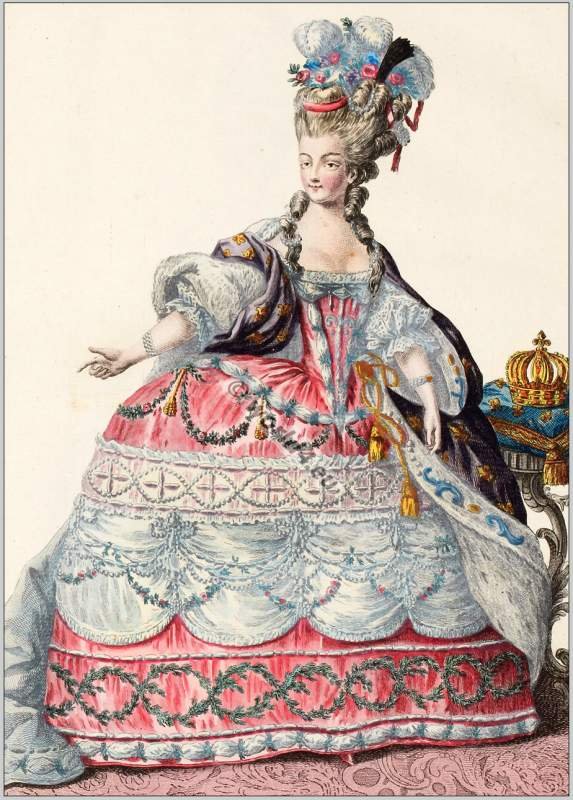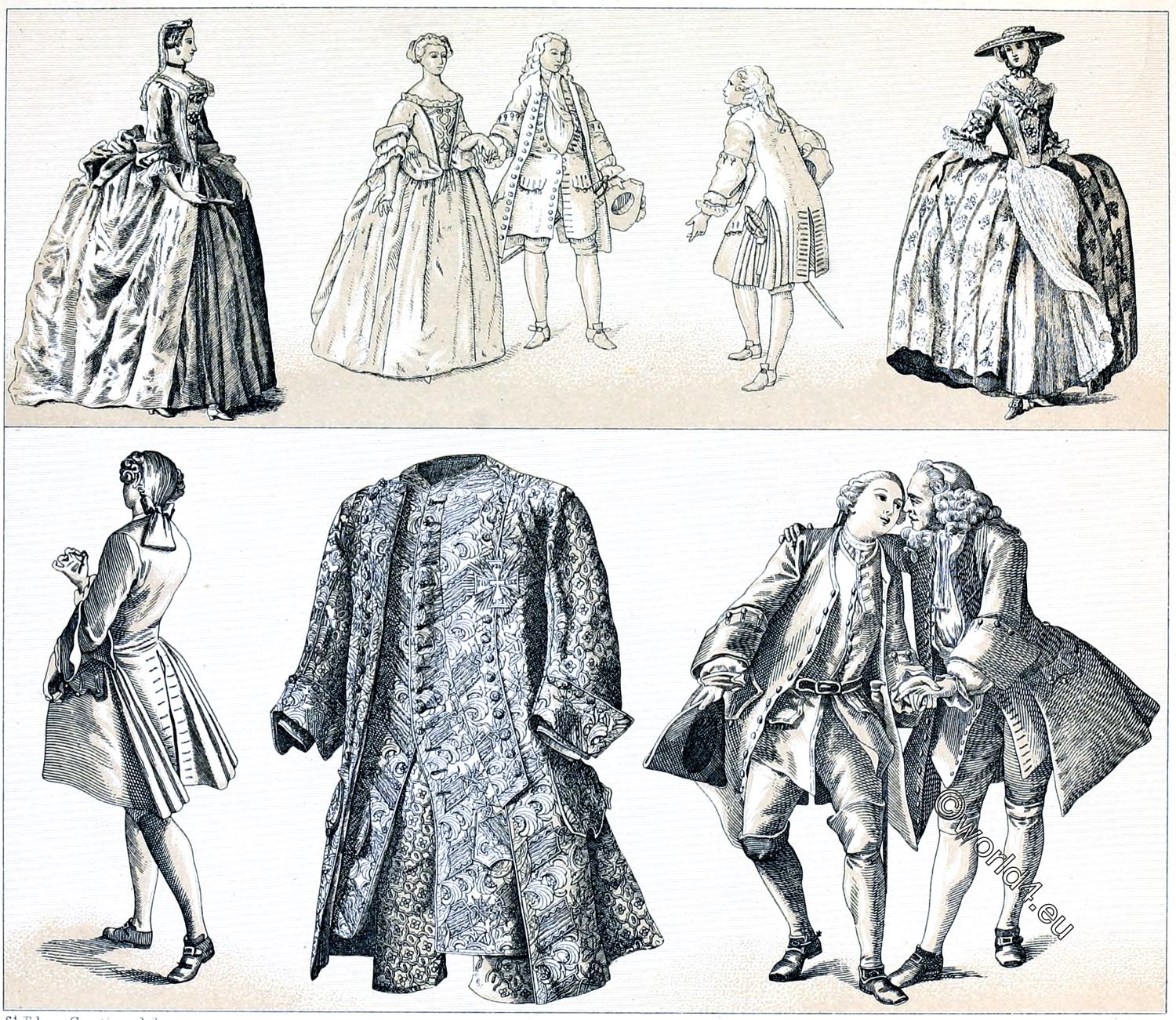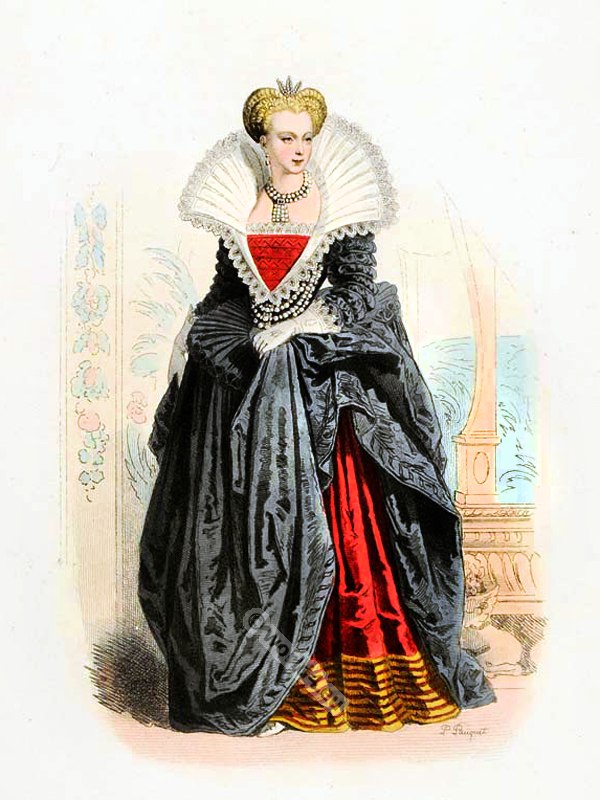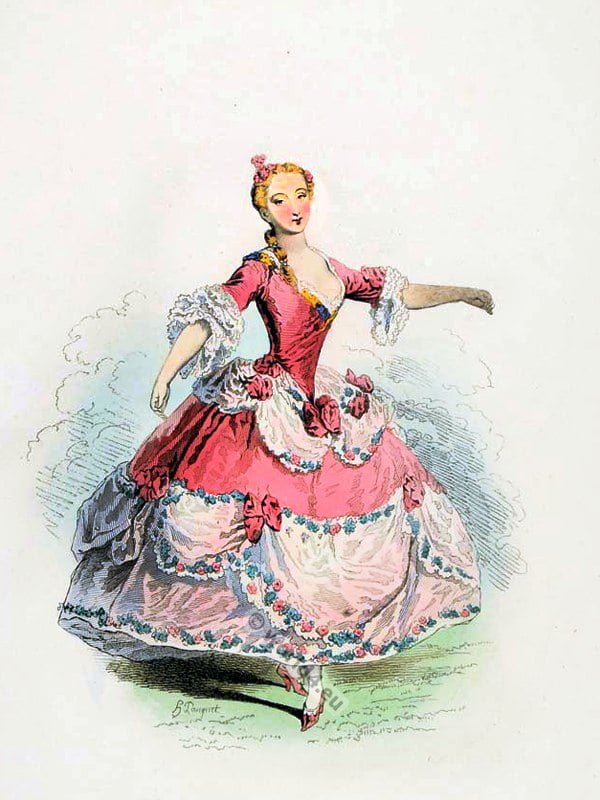
Marie Antoinette (1755-1793) in Court dress, Robe de Cour 1780
Marie Antoinette, Archduchess of Austria, Queen of France in Court dress, trimmed with beads, garlands and acorns, with Royal purple coat adorned with flowers Lys d’Or. Hairstyle of pearls, flowers, Egrets and pins of Diamonds.
Marie Antoinette, Archiduchesse d’Autriche, Reyne de France, en Robe de Cour, garnie de Perles, de guirlandes et de glands, avec un manteau Royal violet, orné de Fleurs de Lys d’Or. coiffure de Perles, Fleurs, Aigrettes et Epingles a Diamants.
Collection d’habillements modernes et galants avec les habillements des princes et seigneurs. Paris 1780. Dessiné par Claude-Louis Desrais; Gravé par Martial Deny; Carl de Vinck. Éditeur et marchand, André Basset.

Continuing






